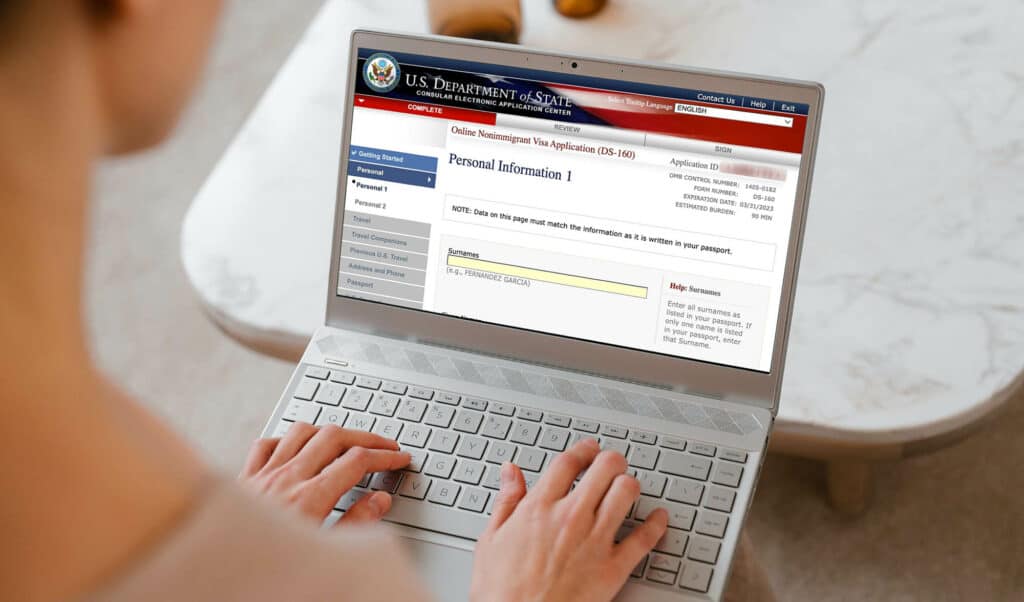
When filling out the DS-160 form for US visa application, you would come across the question “Do you have a telecode that represents your name?”. This question can be confusing especially if you are applying for a US visa for the first time.
In this article, we will learn what a telecode is, why and where it’s used and how to properly answer the question “Do you have a telecode that represents your name?” in your DS-160 form.
Table of Contents

BONUS: FREE eBOOK
Enter your name and email to download the FREE eBOOK: The Secret to VISA-FREE Travel
What is telecode?
A telecode is a four-digit number that represents a non-Latin character. Telecodes were used as character encodings of non-Latin characters to transmit data over an electric telegraph.
Telegraphy used Morse code to transmit data. Morse code is capable of encoding only Latin characters. Therefore, in the late 1800s, telecodes were introduced to encode non-Latin characters into four-digit numbers, which were then transmitted using Morse code.
Telecode meaning
Telecode means Standard Telegraphic Codes. Also commonly known as Chinese Telegraph Codes (CTC) or Chinese Commercial Codes (CCC).
CTC/CCC was introduced in the late 1800s for the transmission of Chinese characters over the telegraph. Telegrams and telegraphs are obsolete so telecodes are rarely used these days.
Telecode example
The translation of the sentence “I am going to America” in Chinese is 我要去美国 and its telecode is 2053 6008 0637 5019 0948.
Let’s look into this example. Imagine you live in London. You have a friend who lives in Beijing. You are going to America and you want to tell this to your friend. This was before the telephones were invented. Your only option was to send a telegram.
The Chinese translation for “I am going to America” is 我要去美国. You convert 我要去美国 written in Chinese characters into telecode using the CTC/CCC codebook. The telecode would be 2053 6008 0637 5019 0948. You transmit this telecode using Morse code to your friend in Beijing. Your friend decodes the Morse code to get a sequence of numbers. Your friend chops this sequence of numbers into four-digit blocks and then decodes it with the help of CTC/CCC codebook. Your friend gets your message 我要去美国 (I am going to America).
What is a telecode name?
A telecode name is a string of four-digit telecodes of the non-Latin characters of your name. A string of telecodes can be two or more telecodes separated by spaces.
Telecode name meaning
Telecode name means an encoding of someone’s name in telecodes. Full Chinese names have two or more characters. When you encode them into telecode and put them together, that would be the telecode name.
Telecode name example
Everyone knows who Bruce Lee is. His Chinese name is Lee Junfan, written as 李振藩 (source: Wikipedia). The telecode of his name (李振藩) is 2621 2182 5672.
| Chinese Character | Corresponding Telecode |
| 李 | 2621 |
| 振 | 2182 |
| 藩 | 5672 |
Where are telecode names used?
Telecode names were widely used in transmitting Chinese names using telegrams. Though telegrams are obsolete, there is still a need to identify a Chinese name without using Chinese characters. Non-Chinese speaking countries use telecode in their visa and immigration applications such as the DS-160 form for the US visa.
Telecode names are still being used on the Hong Kong and Macau ID cards and to store Chinese names in their computer systems.
The question in DS-160 form – “Do you have a telecode that represents your name?”
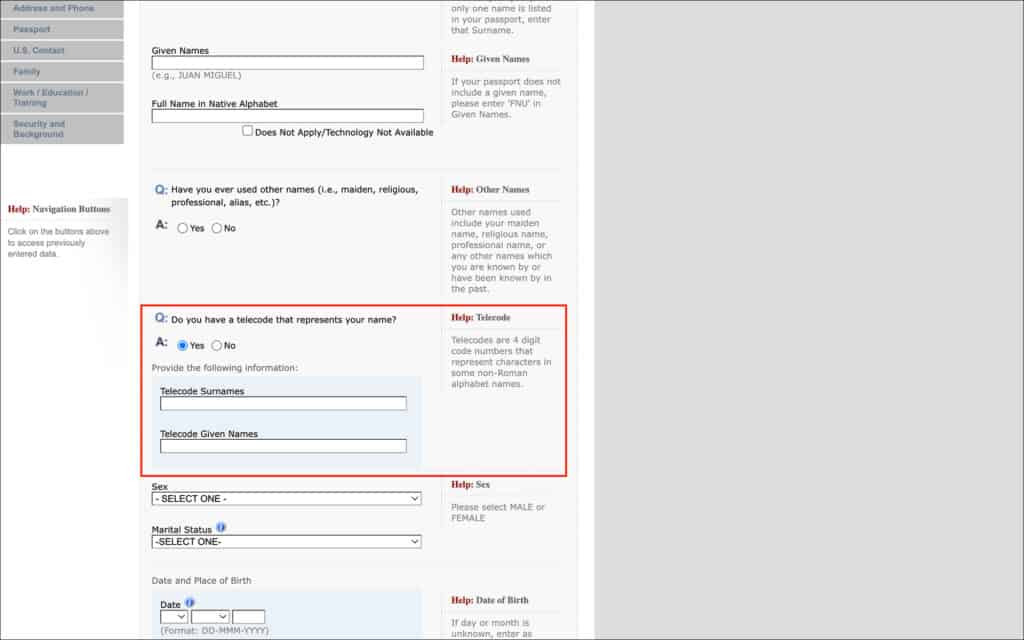
While filling the DS-160 form, in the Personal Information 1 section, you will see the question “Do you have a telecode that represents your name?”. This question has two choices “Yes” or “No”. If you select “Yes”, you will be asked to enter the telecode of your surname and given name in the spaces provided.
Who should answer the question “Do you have a telecode that represents your name?” in DS-160 form
If you have a Chinese name written in simplified Chinese characters, you should answer “Yes” to this question in your DS-160 form.
If you DO NOT have a Chinese name, you must simply answer “No” to this question in your DS-160 form.
How to correctly answer the question “Do you have a telecode that represents your name?”
Again, only if you have a Chinese name, you will answer “Yes” to this question. And then you will enter your telecode name in the space provided.
Use an online telecode software such as NJStar or Chase Dream to find the telecodes for your Chinese surnames and given names.
Enter the code for your surname in “Telecode Surnames” box. If you have more than one surname, put the codes of your surnames together separated by spaces. Enter this sequence of surname codes in “Telecode Surnames” box.
Similarly, enter the code for your given name in “Telecode Given Names” box. If you have more than one given name, then put the codes of your given names together separated by spaces. Enter this sequence of given name codes in the “Telecode Given Names” box.
Example 1
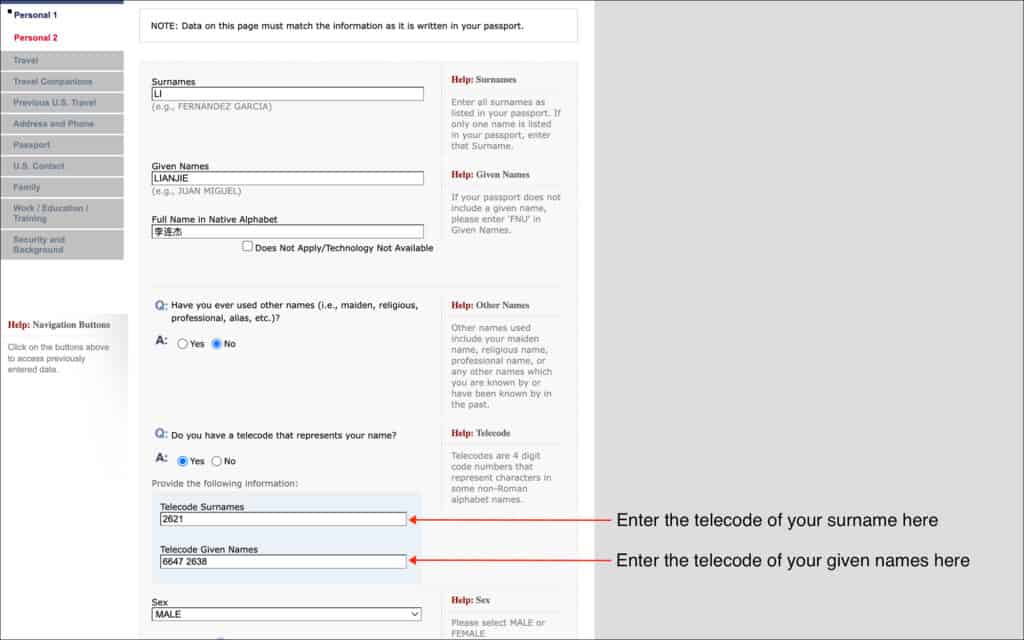
If your name is 李连杰 (Li Lianjie)(popular Chinese actor Jet Li from movies such as Shaolin Temple), find the telecodes for your surname and given names using an online telecode software such as NJStar or ChaseDream.
| Name Part | English | Chinese | Telecode |
| Surname(s) | Li | 李 | 2621 |
| Given Name(s) | Lianjie | 连杰 | 6647 2638 |
Enter the telecode for your surname 2621 in the “Telecode Surnames” box. And enter the telecodes for your given names 6647 2638 in the “Telecode Given Names” box.
Example 2
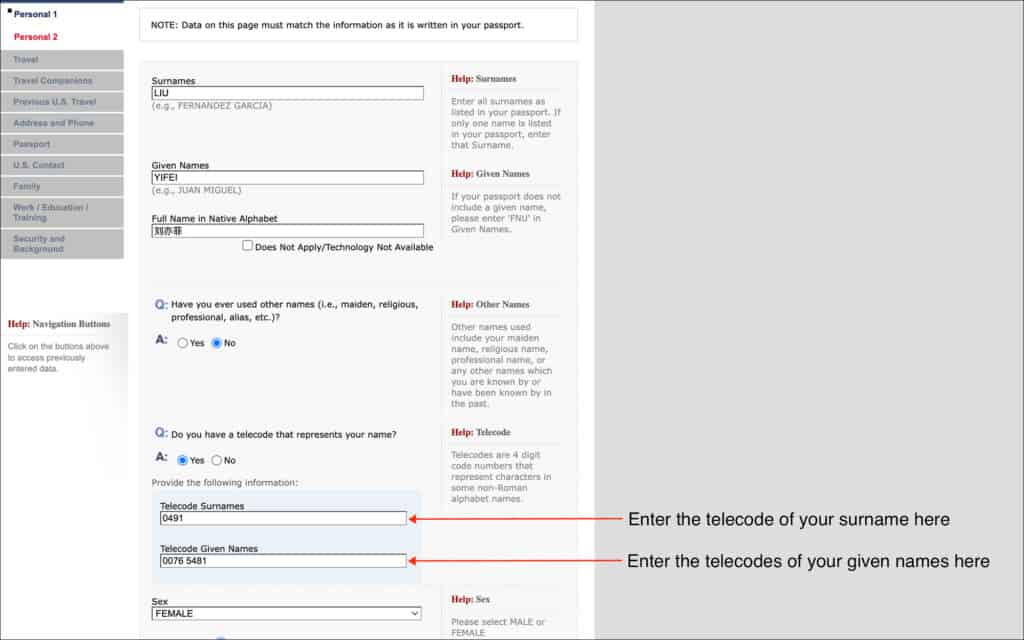
If your name is 刘亦菲 (Liu Yifei) (popular Chinese actress from the movie Mulan), find the telecodes for your surname and given names using an online telecode software such as NJStar or ChaseDream.
| Name Part | English | Chinese | Telecode |
| Surname(s) | Liu | 刘 | 0491 |
| Given Name(s) | Yifei | 亦菲 | 0076 5481 |
Enter the telecode 0491 for your surname in the “Telecode Surnames” box. And enter the telecodes 0076 5481 for your given names in the “Telecode Given Names” box.
Conclusion
While filling out the DS-160 form for US visa, you may come across the question “Do you have a telecode that represents your name?”. This question appears in the “Personal Information 1” section. This question is only relevant if you have a Chinese name. If you have a Chinese name use telecode software such as NJStar to encode your Chinese name into telecode name. Answer “Yes” to this question and enter your telecode name in the space provided.
If you do not have a Chinese name, simply select “No” as the answer to this question and move on to the next question in your DS-160 form.

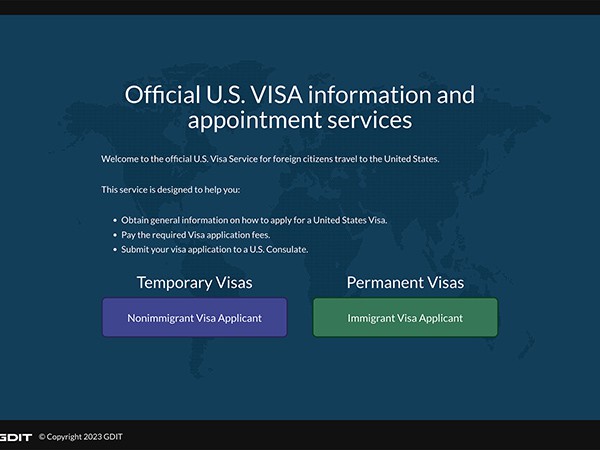 How to Schedule US Visa Appointment on AIS US Visa Info (GDIT/Yatri): A Step-by-Step Guide
How to Schedule US Visa Appointment on AIS US Visa Info (GDIT/Yatri): A Step-by-Step Guide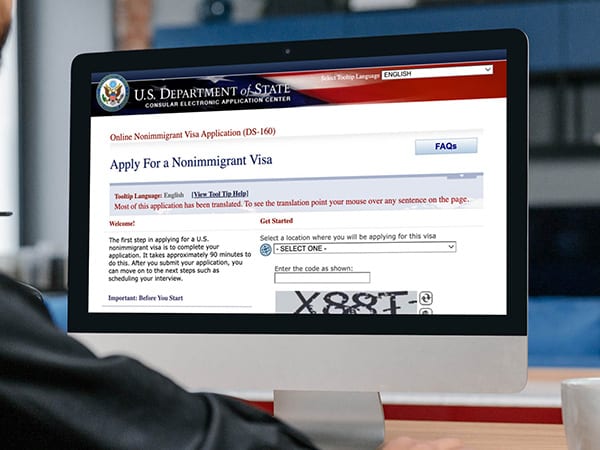 DS-160 Form for US Visa: Everything You Need to Know
DS-160 Form for US Visa: Everything You Need to Know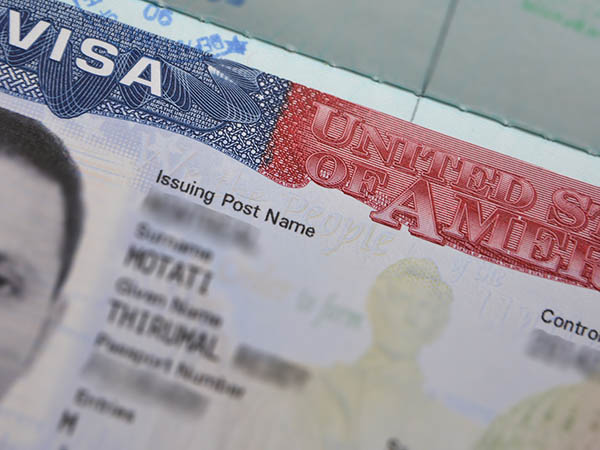 US Visa Appointment: Everything You Need to Know
US Visa Appointment: Everything You Need to Know